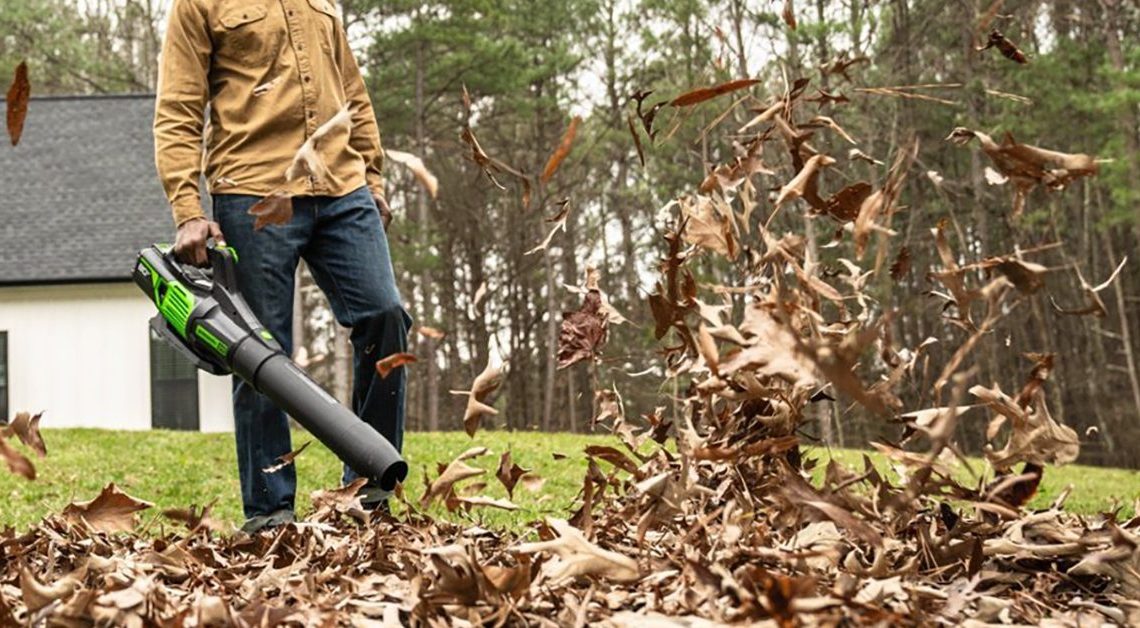
A new interactive mapping tool shows how a growing number of US cities and states have passed regulations restricting the use of gas-powered lawn equipment, or incentivizing the use of electric equipment, with big clean air benefits for a comparatively small investment.
While gas lawn equipment use may seem like it’s not all that big a deal at first glance, gas leafblowers and lawnmowers can actually extremely bad for air and human health – sometimes moreso than cars.
The issue is that “small off-road engines” (SOREs) usually don’t include any sort of pollution controls, and are often dirtier two-stroke engines that create more power in a small package, but emit orders of magnitude more pollution in the form of unburned particulates from the incomplete combustion process they undergo when compared to four-stroke engines.
As a result, running a gas leaf blower for an hour can produce more emissions of nitrogen oxide (NOx) and reactive organic gases (ROG) than driving a small passenger car 1,000 miles. The car still has plenty of other impacts – higher carbon emissions and energy use, contribution to sprawl and land use, oil dependency and so on – but for these specific smog-forming pollutants, SOREs have a major impact.
It’s gotten to the point where California regulators at one point said that gas lawn equipment was responsible for more NOx + ROG emissions statewide than passenger cars did. And in Colorado, lawn & garden equipment contributes about a third as much ozone as the Colorado’s large oil & gas industry, or also about a third as much as all on-road vehicles combined (including heavy duty trucks).
This pollution doesn’t just form smog and harm human health, but when it happens in residential areas as it often does, it can directly pollute the air of the homes nearby – and operators, of course, have to breathe it every day. Not only that, but the rumbling noise of lawn equipment can create quite a nuisance in residential areas, especially with the rising popularity of working from home.
As a result of all of this, regulators in many states and cities have recognized that restrictions on gas lawn equipment can give outsized air quality benefits for relatively little cost or disruption, and that’s exactly what they’ve done in many places across the country, according to a new analysis by U.S. PIRG.

The new interactive mapping tool was created by U.S. PIRG, a public interest advocacy group which focuses on a number of issues, including environment and clean air.
It shows that cities in 26 states have passed some sort of restriction on use of gas lawn equipment, or incentive to swap to electric. As you might expect, California and Colorado are leading the way here, but plenty of other states and cities have something available, including some that aren’t always known for defending clean air on the state level (like, for example, Texas),
These restrictions take several forms. From California’s statewide ban on sale of new gas lawn equipment, to city restrictions on gas leaf blowers or on any equipment over a certain noise level, to municipal use of electric equipment, or simply incentives to encourage swapping out gas for electric.
Thankfully, there are better options available these days, and they’re quite cheap compared to the outsized air quality benefits they produce.
Electric lawn equipment has improved dramatically in recent years, offering lower noise, no emissions, and just as much power as gas-powered versions. Units are often available at a similar price as gas versions, and not only that, there are incentives available to replace gas models with electric ones.
Some of the locations on the above map have focused on an incentive approach rather than limitations. So in places that have boneheadedly made it illegal for local governments to restrict the use of gas leaf blowers like Texas has, cities like Austin and Dallas have nevertheless instituted incentive campaigns to help their residents and encourage switching over.
US PIRG’s page describes several policies that cities or states can implement to help reduce the impacts of these small polluting engines, and residents can certainly talk to their representatives and encourage movement on this issue.
And if you’re looking to get yourself some electric lawn equipment, keep an eye out for Electrek’s “Green Deals” posts where deals come up quite frequently. And check with your state or regional clean air regulator to see if any rebates are available – here’s California’s page and here’s Colorado’s, but as you can see from the map, there are incentives available elsewhere tool.
Author: Jameson Dow
Source: Electrek



